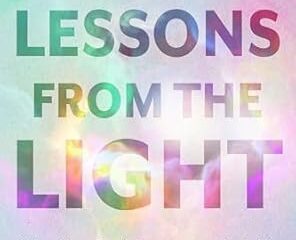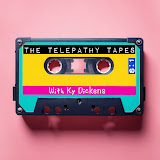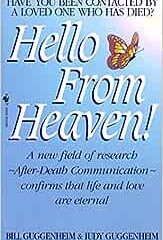Life After Life: The 25th Anniversary of the Classic Bestseller
AUTHOR: Raymond A. Moody, Jr. M.D.
PUBLISHED: 1975 (2001)
MY COMMENTS:
This is one of the most iconic books in the broader field of consciousness studies.
“Life After Life” was the book that introduced modern society to the phenomenon of near-death experiences, written by the unquestioned pioneer in this field … Raymond A. Moody, Jr., M.D.
With a medical degree and a PhD in philosophy, Dr. Moody is a world-renowned scholar, researcher, author, professor, public speaker, and grief counsellor.
He continues to be widely recognized as the leading authority on near-death experiences. In fact, it seems this topic cannot be addressed without invoking the Raymond Moody name.
“Life After Life” was his first book on the subject … now over 13 million copies sold.
Remind me … what’s a near-death experience (NDE)?
The near-death experience is an amazing phenomenon which I’ve written about in the past. For a fuller explanation, see my post of the book “After,” recently released by Bruce Greyson, M.D., an NDE researcher inspired by Dr. Moody’s work.
In the meantime, here’s the simple version …
An NDE is an experience in which a person “dies,” or comes super close to it … could be a heart attack, complications during surgery, an accident, near drowning, attempted suicide, etc. … and then is resuscitated.
But the key that makes it an NDE vs. just a temporary “time out” is this …
The person comes back having experienced an intensely vivid voyage or other-worldly encounter, even though the state of their brain function at the time would suggest this to be medically impossible.
Uh, wait up, Karen … ahem! If it’s medically “impossible,” then how is this, you know, actually “possible”?
Good question. Yet, apparently it is, and has happened throughout history. In fact, George Gallup has estimated that about 5% … FIVE PERCENT … of the general population has experienced one. That’s a LOT of folks!
So yes, this is indeed a real thing. And Dr. Moody was the one who brought it out into the open, early in his career, after finding and studying more than one hundred cases of people who had experienced “clinical death” and were subsequently revived.
He wrote this book to share what he’d learned, coining the “near-death experience” term still used today.
Back then, they laughed …
At the time this book was originally published, the medical scientists of the day laughed and dismissed it. I mean, everyone knew that such experiences were just drug-induced hallucinations, oxygen deprivation, or mental illness … right?
However, with the publication of this book, a field of near-death studies began. And within years, the laughing dialed back and mainstream science began a slow and reluctant shift over to Dr. Moody’s side.
Since then, major reviews of near-death experiences in scientific literature have agreed with his findings … myriad articles on the subject have been published in mainstream scientific journals … and the subject has been integrated into the curricula of U.S. medical academic institutions.
And this is the book that started it all … bringing it to the attention of scientists, researchers, and regular folks like you and me.
So, why did you wait so long, Karen … ?
If it’s so “iconic,” why did you take so long to tell us about it?
Yeah, another good question. This really should have been a staple in my library, right?
But it wasn’t. Truth be told, I resisted acquiring it, because after all, it was published almost 50 years ago! Surely, anything said then would be obsolete now … eclipsed by more modern research, like the book “After” I mentioned above.
However, I came across “Life After Life” in a used bookstore for a ridiculously low price and decided I really “should” familiarize myself with how this all started since, you know, I keep writing about it and all.
Little did I know what a delightful surprise awaited me!
This is a totally worthwhile book still today, in 2023. In fact, in rereading it to write this post, I noticed the same sentiments expressed in the Preface written for my 25th anniversary edition (in 2001). Dr. Melvin Morse writes …
“It is a timeless book, one that will be just as vital twenty-five years from now as it was twenty-five years ago.”
Yup, spot on.
So, what’s the book like?
Moody is absolutely a scientist, a point made clear in his writing, however in “Life After Life,” he is not trying to put the material forward as scientific research. In fact, he specifically states that what he’s reporting on does not meet the criteria for a scientific study.
But guess what? That frees him up to write in a way that’s super easy to read and understand for the rest of us.
He is a very good writer of scientific inquiry for the layperson … logical, thoughtful, clear … even personable (hah, never saw that coming!).
You have to be prepared to set aside the male gender-dominated writing style typical of that era (you know, “he” this and “he” that), but it’s worth it.
The book isn’t super long. A large portion of it is devoted to laying out the common aspects of near-death experiences … for example, leaving the body, travelling through a dark space or tunnel, meeting deceased loved ones, being enveloped by a loving light, and so forth.
Then for each, Dr. Moody includes first-hand descriptions of such experiences as told to him by those who went through it. They’re fascinating to read.
He doesn’t sensationalize the material, sticking to the facts. And because he doesn’t regard this publication as scientific in nature, he doesn’t try to draw any conclusions.
However, he admits to the importance of the subject and the effects it has on experiencers, describing what these impacts can be.
The book also includes three sections at the end I found quite valuable … Questions, Explanations, Impressions.
Questions include those that continue to arise even now, so I appreciated the answers he provided. Questions like … Are you making this all up? How do you know people aren’t just lying to you? If NDEs are as common as you say, why aren’t they more well known? And the list goes on.
In Explanations, he presents common theories others have put forth to challenge NDEs being “real” … and then logically takes them apart, showing from a science-based perspective why they don’t hold water.
Impressions are his final thoughts, and the scientist in him again comes out as he makes clear that what he’s reported doesn’t “prove” anything. But that was almost 50 years ago ….
Updated Editions
I was fortunate to stumble on the 25th anniversary edition, and apparently there’s also a 40th anniversary edition. If you can find one of these, take the time to read the new bits.
My version included …
- a Preface by Melvin Morse, M.D.
- a Foreward by Elisabeth Kubler-Ross, M.D. (an iconic name in this field herself)
- an Afterword by Moody, which provides some useful updates and intriguing projects he’s subsequently undertaken.
One mention in particular caught my eye … “empathic death experiences.” This was his original name for what’s now called “shared death experiences,” the subject of another book I recently posted … “At Heaven’s Door.”
So, if you want a quick, easy-to-read, down-to-earth explanation of near-death experiences … or perhaps are interested in how all this research started in the first place … it’s worth laying your hands on this treasure.
If you find this is a subject that interests you, I’d also encourage you to follow up with the book I mentioned above … “After” by Bruce Greyson, M.D.
Let’s Share
Maybe for some of you, this is catching your attention because it all sounds intriguingly familiar, perhaps like an experience you’ve had yourself ….
If you think you may have had a near-death experience, or something even just sort of like it, please tell us about it by posting in the Comments below.
Frankly, this is a super valuable subject for all of us to explore, because this phenomenon is a fundamental underpinning to a life-changing revelation beginning to emerge, which is …
The death of the body is NOT the death of us.
To sign up for notification of future posts, click here.



0 Comments